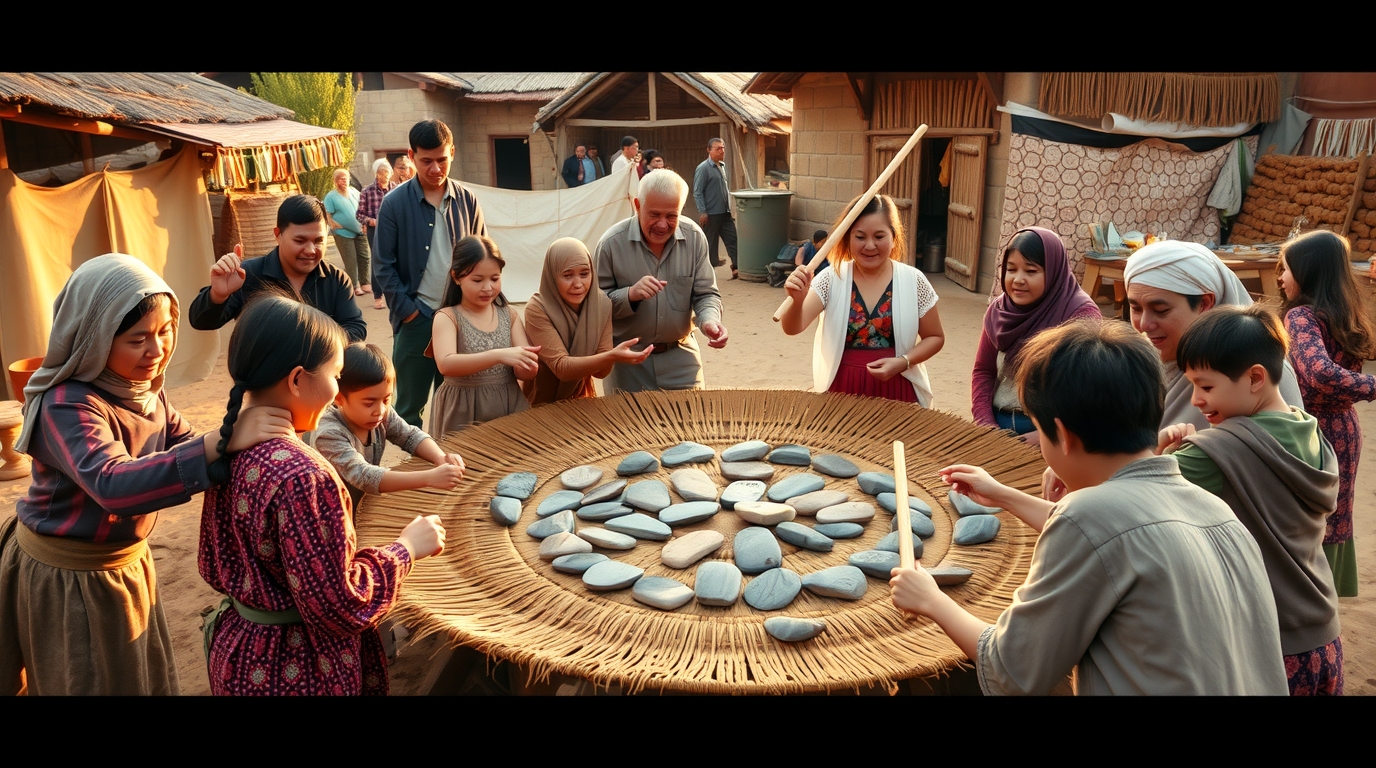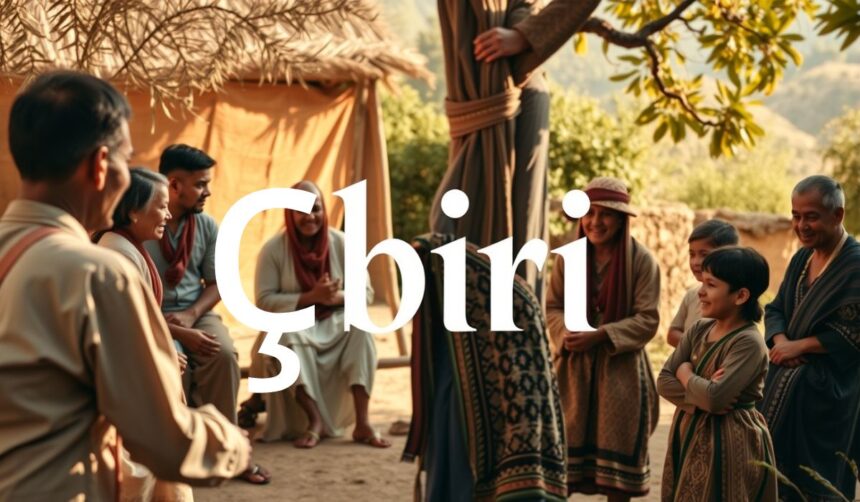In a world increasingly driven by digital entertainment, traditional games like çbiri stand as powerful reminders of how culture, community, and human connection once flourished without screens. Çbiri is not just a pastime—it’s a cultural thread that ties generations together through shared memories, values, and identity. More than competition or fun, this ancient game reflects the wisdom, rhythm, and cooperation embedded within the society that created it.
Today, as cultural historians, educators, and enthusiasts revisit traditional practices to preserve intangible heritage, çbiri has gained renewed attention. Understanding çbiri means uncovering the heart of a community, its history, and its living traditions that continue to evolve while retaining their soul.
What Is Çbiri? Understanding Its Origins and Cultural Role
Çbiri is a traditional cultural game rooted in centuries-old customs that once shaped social life in small communities. Though versions of the game may vary from region to region, its essence lies in unity, strategic thinking, and cooperation. Unlike modern sports that focus primarily on individual performance, çbiri celebrates collective strength.
Historical accounts suggest that çbiri originated as a communal activity often played during harvest seasons, festivals, or gatherings. It wasn’t just about winning—it was about participation. Each move in the game carried a symbolic meaning, reminding players of balance, respect, and teamwork. Through çbiri, elders passed down life lessons, and young players learned about patience, focus, and fair play.
The Deeper Meaning Behind the Game

Çbiri’s true beauty lies in its symbolism. Every element—the players, the rhythm, the physical or mental challenges—represents more than what meets the eye. In many communities, the game was viewed as a metaphor for life, teaching perseverance, adaptability, and humility in the face of challenge.
Anthropologists studying regional games have found that traditional pastimes like çbiri embody core cultural philosophies. The game’s collaborative nature reflects the importance of unity and community harmony. Its strategic aspect emphasizes foresight and mutual trust—values essential to the social fabric of traditional life.
How Çbiri Is Played: Rules, Setup, and Gameplay
While exact rules may differ depending on the region, most forms of çbiri involve two or more teams competing through a structured series of physical or mental tasks. The setup can include symbolic objects—such as stones, sticks, or hand gestures—each representing elements of nature or aspects of community life.
Gameplay is built on rhythm, teamwork, and timing. Often, the pace quickens as participants progress, creating both excitement and tension. Unlike modern competitive sports, there are no harsh eliminations in çbiri; instead, emphasis is placed on collaboration, strategy, and endurance. This makes it not only enjoyable but also inclusive, allowing players of all ages and skill levels to participate.
Çbiri as an Expression of Cultural Identity
For many communities, çbiri represents who they are. It’s a living artifact of identity, woven into ceremonies, local traditions, and storytelling. The chants, songs, and laughter that accompany the game are as integral as the play itself. Through çbiri, people express pride in their roots and celebrate cultural continuity.
In multicultural societies like the United States, cultural heritage games such as çbiri offer a bridge between the past and present. Immigrant families often use traditional games to teach their children about their ancestry, helping them stay connected to their origins while embracing modern American life.
Why Çbiri Matters in the Modern World
In today’s fast-paced digital world, where social interaction is often mediated by technology, çbiri reminds us of the human connection that can only come from face-to-face interaction. It encourages people to move, think, and collaborate—values increasingly lost in the modern era.
Çbiri is also an example of intangible cultural heritage, recognized by UNESCO-style preservation efforts worldwide. Games like this preserve not only recreation but also language, art, and worldview. When people play çbiri, they’re not just engaging in a game; they’re participating in a centuries-long narrative that continues to teach, inspire, and unite.
Educational and Social Benefits of Playing Çbiri
Educators and cultural organizations have begun reintroducing çbiri into classrooms and community programs as a tool for cultural education. The game naturally develops social-emotional skills—empathy, cooperation, and communication—while fostering an appreciation for diversity.
Children who play çbiri learn more than just rules; they experience cultural storytelling in action. For adults, it becomes an opportunity to reconnect with heritage and pass down traditions. Community centers that include çbiri in their cultural workshops report stronger participation and a deeper sense of belonging among attendees.
Çbiri and Physical Well-Being
Though often viewed through a cultural lens, çbiri also promotes physical activity and mental alertness. Depending on the variation, it can involve quick reflexes, coordination, and teamwork. Its rhythmic, repetitive movements offer both aerobic and cognitive benefits, helping improve focus and agility.
Unlike modern sports that prioritize competition, çbiri promotes wellness through inclusive participation. There’s no pressure to outperform; the focus is on collective success and shared enjoyment. This makes it a powerful activity for families, schools, and wellness programs looking to blend culture and health.
Reviving Çbiri in the Digital Age
The digital age presents both a challenge and an opportunity for traditional games. While many cultural activities have faded due to globalization, çbiri is experiencing a renaissance through social media and cultural festivals. Videos, community events, and educational blogs are helping younger generations rediscover the game.
In the U.S., cultural heritage organizations have started hosting çbiri workshops to introduce Americans to the game’s history and meaning. This revival not only protects cultural identity but also enriches cross-cultural understanding, reminding us that tradition can evolve without losing authenticity.
Çbiri and Global Cultural Exchange
Çbiri’s message of teamwork, strategy, and respect transcends borders. As cultural exchange expands, more people worldwide are drawn to games that reflect deeper human values. Introducing çbiri to global audiences supports intercultural dialogue, showcasing how traditional practices can unite rather than divide.
American educators and anthropologists studying global play traditions have recognized çbiri as a symbol of sustainable cultural exchange—a form of recreation that promotes peace, empathy, and learning across communities.
Preserving Çbiri for Future Generations
Cultural preservation isn’t just about museums or archives—it’s about living participation. Ensuring the survival of çbiri depends on teaching it, sharing it, and playing it. Families, schools, and cultural institutions can keep it alive by integrating the game into celebrations, sports days, and heritage events.
Supporting organizations that document and teach çbiri is another way to protect this legacy. As more people become aware of its meaning, çbiri can thrive as both an educational and social tradition for generations to come.
Final Thoughts: Çbiri as a Living Legacy
Çbiri is far more than a traditional game—it’s a living testament to humanity’s desire for connection, cooperation, and culture. It carries the wisdom of ancestors, the laughter of communities, and the rhythm of shared experience. For a world seeking balance between progress and tradition, çbiri offers the perfect reminder that joy and meaning often come from the simplest, most authentic human interactions.
Preserving çbiri means preserving the values that make us who we are—unity, creativity, respect, and understanding. Whether you’re discovering it for the first time or rekindling childhood memories, çbiri remains a vibrant cultural heritage experience worth celebrating and sharing.
Frequently Asked Questions (FAQs)
1. What is the origin of çbiri?
Çbiri originated as a traditional community game played during local gatherings and celebrations. Its roots lie in ancient social customs designed to teach cooperation, respect, and balance within the community.
2. How is çbiri different from modern games?
Unlike modern sports that emphasize competition and speed, çbiri focuses on teamwork, rhythm, and social connection. It’s designed to bring people together rather than separate winners from losers.
3. Is çbiri still played today?
Yes. Many cultural organizations and families continue to play çbiri, and there’s a growing movement to revive it through schools, festivals, and community workshops, particularly among diaspora communities in the U.S.
4. What can children learn from playing çbiri?
Children who play çbiri develop social skills, patience, strategic thinking, and cultural awareness. The game encourages them to appreciate tradition while building emotional intelligence and teamwork.
5. How can I learn to play çbiri?
You can learn çbiri through cultural centers, community festivals, or online educational platforms that share traditional games. Some organizations in the U.S. offer workshops and tutorials designed to introduce newcomers to this fascinating heritage activity.
FOR MORE : FLIPPAMAGAZINE












